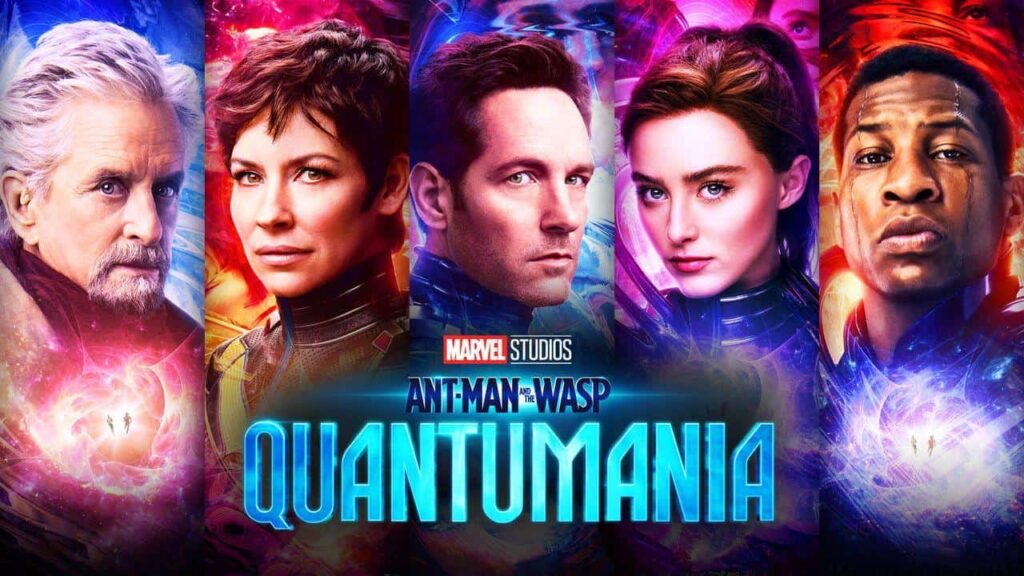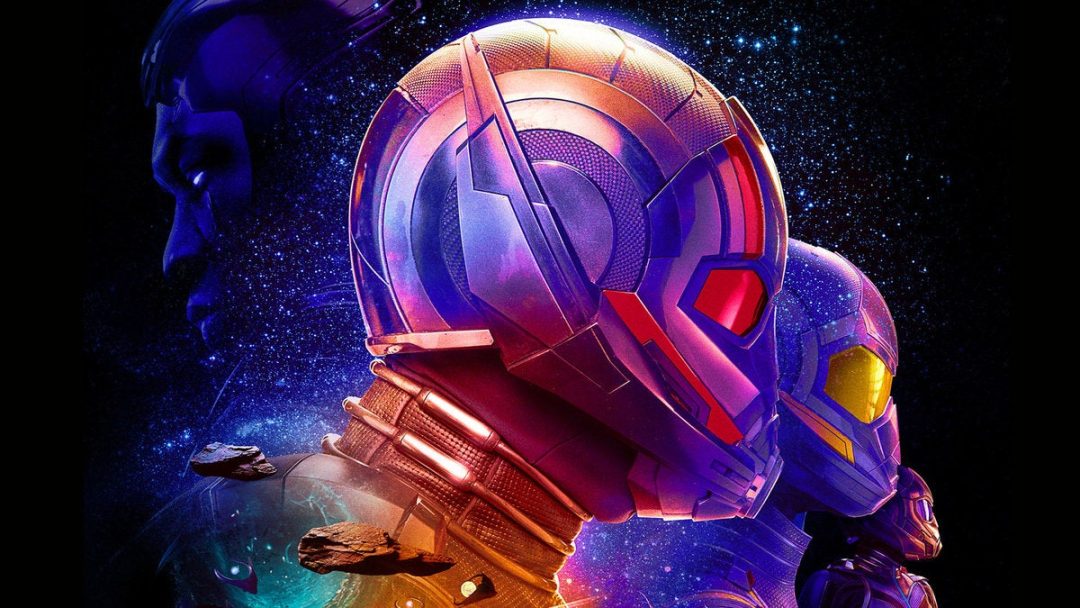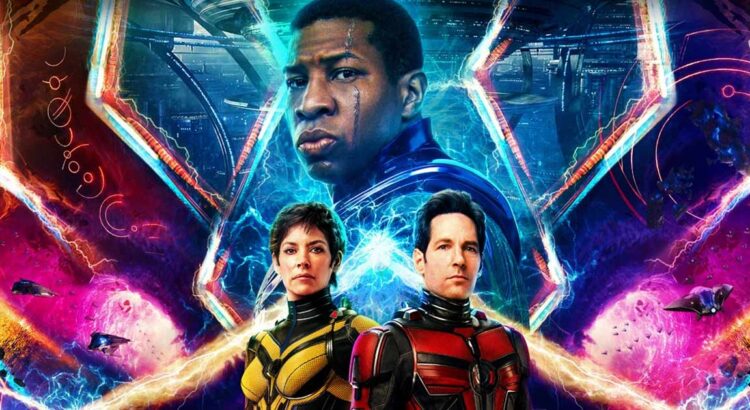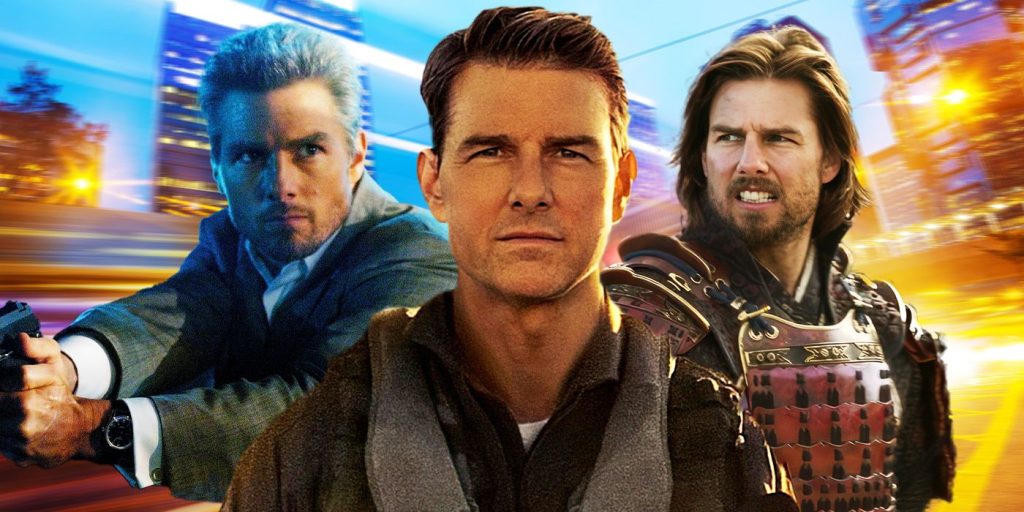Meta Description:
Read our detailed review of Ant-Man and the Wasp: Quantumania, exploring the strengths and weaknesses of the film, from Kang the Conqueror’s performance to the stunning Quantum Realm visuals. Discover how the film fits into the MCU’s evolving multiverse saga.

Ant-Man and the Wasp: Quantumania is the latest chapter in the Marvel Cinematic Universe (MCU) and the third film in the Ant-Man franchise. Directed by Peyton Reed, this film dives deep into the Quantum Realm, introducing new characters, and expanding the MCU’s multiverse saga. With Paul Rudd returning as Scott Lang/Ant-Man, Evangeline Lilly as Hope van Dyne, and Michelle Pfeiffer as Janet van Dyne, the film brings back familiar faces while also introducing new, pivotal roles. The movie’s central antagonist, Kang the Conqueror (played by Jonathan Majors), promises to shake up the MCU’s future.
However, despite its high stakes and stellar visuals, Quantumania is a film that feels more like a bridge to future stories rather than a standout entry on its own. Let’s break down the positives and drawbacks that come with this new addition to the MCU.
H2: Positive Aspects of Ant-Man and the Wasp: Quantumania
While Quantumania has its fair share of criticisms, there’s plenty to enjoy, especially for fans invested in the expanding MCU. The film is packed with vibrant visuals, exciting action sequences, and a strong lead performance. Here’s a look at some of the film’s notable strengths.
H3: Visually Stunning Quantum Realm
One of the highlights of Ant-Man and the Wasp: Quantumania is its portrayal of the Quantum Realm. The film’s CGI work is extraordinary, bringing to life a bizarre and beautiful world that defies the rules of reality. The vibrant landscapes, strange creatures, and surreal environments are a visual treat, making the Quantum Realm an immersive and exciting setting. This imaginative world serves as the perfect backdrop for the characters’ journey, adding a sense of wonder and intrigue.
The film takes full advantage of the potential that the Quantum Realm offers, creating an experience that feels unlike anything we’ve seen before in the MCU. Fans will appreciate the detailed world-building, which offers new layers to the already established Quantum Realm from Ant-Man and the Wasp (2018).

H3: Kang the Conqueror: A Strong Villain
Jonathan Majors’ portrayal of Kang the Conqueror is a standout feature in Quantumania. As the main antagonist, Kang brings both charisma and menace to the screen. His character’s ability to manipulate time and space positions him as a formidable threat, not just for Scott Lang and his team, but for the entire MCU moving forward. Majors’ performance is captivating, adding layers to the villain that make him both terrifying and intriguing.
Kang is set to be a central figure in the MCU’s upcoming phases, and Quantumania does a great job of establishing his power and presence. His role is essential in expanding the MCU’s multiverse storyline, and Majors effectively anchors the film’s larger narrative.
H3: Paul Rudd’s Engaging Performance
As always, Paul Rudd’s portrayal of Scott Lang is full of charm, humor, and heart. His comedic timing continues to shine, offering a refreshing balance to the film’s more serious moments. Scott’s character arc in Quantumania is particularly interesting as he grapples with his role as a hero and a father, with much of his personal growth tied to his relationship with his daughter, Cassie (played by Kathryn Newton). Rudd’s engaging performance ensures that even amidst the high-stakes adventure, the audience remains emotionally connected to Scott’s journey.
Additionally, Rudd’s chemistry with the rest of the cast, especially with Newton, adds a genuine emotional layer to the film, making it more than just a visual spectacle. The father-daughter dynamic is one of the film’s most heartfelt aspects, grounding the fantastical plot in real-world emotional stakes.

H3: Michelle Pfeiffer’s Emotional Return
Michelle Pfeiffer’s return as Janet van Dyne is another key strength of Quantumania. Her character, having spent years in the Quantum Realm, has a deep connection to the strange world the team is now exploring. Janet’s emotional journey is intertwined with the larger story, and Pfeiffer does an excellent job of bringing both warmth and wisdom to the role.
As a mother figure to Hope van Dyne (Evangeline Lilly) and an important piece of the team’s mission, Janet’s emotional depth plays a pivotal role in the film. Her relationships, especially with her family, provide some of the film’s most poignant moments, adding a layer of personal stakes to the high-flying sci-fi adventure.
H2: Criticisms of the Film
While Quantumania has its strengths, there are several areas where the film falls short. The pacing, the predictability of the plot, and some of the heavy exposition detract from what could have been a more impactful and cohesive narrative. Let’s dive into some of the film’s weaknesses.
H3: Generic Plot and Anti-Climactic Finale
One of the major criticisms of Quantumania is that, despite the high-concept premise, the film often feels somewhat generic. The plot, while entertaining, follows a familiar Marvel formula that doesn’t offer many surprises. The third act, in particular, is seen as an anti-climactic finale, one that sets up future MCU films but doesn’t offer the payoff that audiences might expect.
The movie’s conclusion feels more like a setup for the larger multiverse saga rather than a satisfying end to the current storyline. While setting up future films is important, it can leave the current film feeling rushed and less fulfilling on its own. The stakes, although high, don’t carry the same weight as they do in previous Ant-Man films or other MCU installments.
H3: The Confusing and Tedious Villain Dialogue
While Kang the Conqueror is a compelling villain, some of his dialogue in Quantumania can be overwhelming and hard to follow. The exposition-heavy speeches about time travel, multiverses, and Kang’s various motives can make the film feel bogged down by complicated lore. For casual viewers or those not as familiar with the MCU’s multiverse concept, these sections can feel tedious and may detract from the overall enjoyment of the film.
Kang’s dialogue, although important for setting up future plot points, could have been delivered in a more concise and engaging way. This long-winded explanation of multiverse mechanics slows down the film’s momentum and can make certain scenes feel like a drag.
Stay tuned for the second half of this review, where we’ll discuss how Quantumania sets up future MCU films and its place in the grand multiverse saga.
For more insights into the Marvel Cinematic Universe, check out our Marvel Movie Reviews and Kang the Conqueror’s Future in the MCU.
H2: MCU World-Building and Phase 5 Setup
Ant-Man and the Wasp: Quantumania is not just a standalone adventure but also a key player in the MCU’s larger narrative. The film builds on the multiverse saga, offering crucial setups for the next phases of the MCU. Kang the Conqueror’s introduction, in particular, lays the groundwork for future films and shows that the MCU is evolving into a more complex, interconnected universe.
H3: Expanding the Multiverse Saga
The MCU’s multiverse storyline, which began with Loki and Doctor Strange in the Multiverse of Madness, takes another significant step forward in Quantumania. Kang the Conqueror’s role in the film highlights just how pivotal the multiverse will be in shaping the MCU’s future. The film effectively expands on the idea of multiple timelines, alternate realities, and Kang’s potential to disrupt the entire fabric of time and space.
Kang’s appearance in this film is essential for setting up future MCU films, particularly those dealing with the multiverse, like Avengers: The Kang Dynasty and Avengers: Secret Wars. As the new big bad, Kang’s role will be central to the upcoming MCU phases, and Quantumania provides the first glimpses of the threat he poses.

H3: Setting Up Future MCU Installments
Quantumania serves as an important stepping stone in the MCU, setting up key plot points for upcoming films and series. Beyond Kang, the film introduces elements that will play a significant role in Phase 5, including the deeper exploration of the Quantum Realm and the expansion of the multiverse. It’s clear that the consequences of the events in Quantumania will ripple throughout future MCU films, making it a crucial chapter in the saga.
The introduction of new characters and the deepening of existing relationships also sets the stage for more expansive stories. Cassie Lang’s (Kathryn Newton) growing importance in the MCU, as well as the return of Janet van Dyne, suggests that family dynamics and legacy will continue to play a central role in future films.
H2: Conclusion: A Fun but Uneven MCU Entry
Ant-Man and the Wasp: Quantumania is a film that balances excitement with some notable flaws. While it offers plenty of thrilling action, fun performances, and dazzling visuals, it doesn’t fully live up to its potential. The film feels more like a setup for future MCU narratives than a fully realized story on its own.
H3: Is Quantumania Worth Watching?
For fans of the MCU, Quantumania is a must-watch, especially given its importance in expanding the multiverse saga. The film’s engaging performances, especially by Paul Rudd and Jonathan Majors, and the stunning visuals of the Quantum Realm make it a worthwhile addition to the franchise. However, its pacing issues, lack of a truly memorable plot, and the overuse of exposition-heavy villain dialogue may leave some viewers underwhelmed.
Ultimately, Quantumania works best for those invested in the larger MCU, offering exciting glimpses of what’s to come, but it doesn’t stand as one of the most impactful films in the series.
For more insights into the MCU, check out our Marvel Cinematic Universe Reviews and How Kang the Conqueror Shapes Phase 5.


